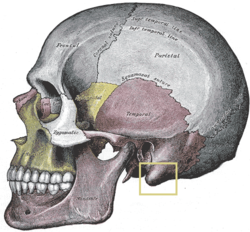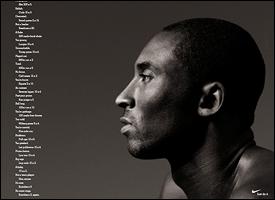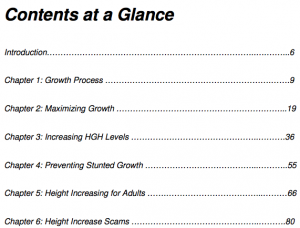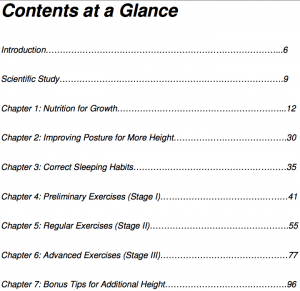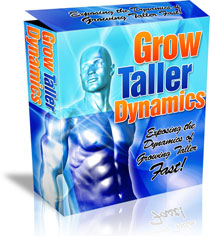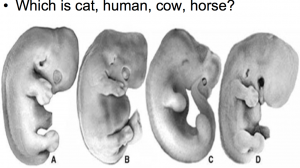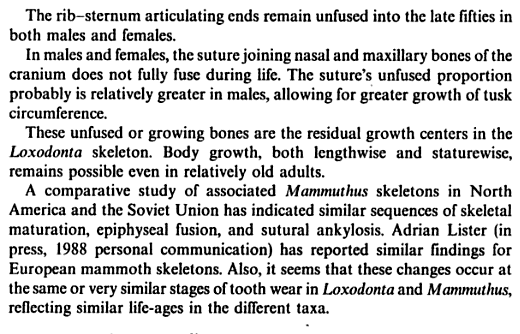I recently found the out that the foods that are derived from soy based products seem to contain a type of compound known as isoflavone aka phytoestrogen. This phytoestrogen compound seems to have a chemical structure similar to the compound estrogen.
From a website The Vegan RD the women writer talks about the misconception that soy based products contain estrogen, when in fact they contain something that is not exactly estrogen but very similar to estrogen. She states…
“Soyfoods are unique among commonly-consumed foods because they contain large amounts of isoflavones.”
“Both isoflavones and estrogen bind to and activate estrogen receptors (ERs) on cells. Human cells have two types of these receptors–ER-alpha and ER- beta—which have different distributions in different tissues. That doesn’t matter to estrogen, which happily binds to either type, but isoflavones are more finicky. They much prefer ER-beta. It’s an important distinction, because the two types of receptors produce different—sometimes completely opposite—effects.”
“…while estrogen therapy can protect bone health in postmenopausal women.”
“In contrast, the osteoporosis drug raloxifene—which is a SERM—has estrogen-like effects on bones, but anti-estrogenic effects in breast tissue. So it helps protect bone without raising breast cancer risk.
Analysis & Interpretation:
I would assume that this women know a little more than the average person about soy based foods since she says that her husband writes about soy based products. It is true that soy based food can help with bone density increase while avoiding the increased chance for endometrial cancer and perhaps also with an increased risk of breast cancer which would be noticed from estrogen replacement therapy. Notice what she write about the Selective Estrogen Receptor Modulators, SERMS.
Now, first of all I now know that some Health Websites which says that soy based foods have high estrogn levels are not really correct. They have high levels of something very similar. However an axiom which I will always say from my 1 year of research on the science of height increase is this…
Having too much estrogen flowing through a developing child’s system will stunt their longitudinal boen growth – This is why girls end up starting puberty around 2 years earlier than boys and end puberty, as well as growth plate full closure 2 years earlier than boys, which would result in girls on average being shorter than boys. Their estrogen is causing them to speed towards growth plate closure faster.
There is so much evidence for the fact that estrogen is one of the primary causes for why we really start to experience growth plate closure. I refer to the PubMed articles…
- “Estrogen receptor-beta inhibits skeletal growth and has the capacity to mediate growth plate fusion in female mice.” – Remember again that the woman writer for the vegan website says that the isoflavones in soy only binds to estrogen receptor-beta!!
- “The role of estrogen receptor-α and its activation function-1 for growth plate closure in female mice.” – This study suggest that maybe estrogen receptor-alpha is more influential in causing the growth plates to go through fusion/closure than the beta receptors.
One term in her analysis of this type of “pseudo-estrogen” really jumped out at me and that was the word Raloxifene. I have seen that term Raloxifene before in my research, but it was linked to the effect where longitudinal growth would be decreased and inhibited if a person ingested or got injected with a high concentration of this element.
When I did the research on Raloxifene, the Wikipedia article on Raloxifene showed me something which I definitely recognize before in previous research. The sentence states…
“In 2006, the National Cancer Institute announced that raloxifene was as effective as tamoxifen in reducing the incidence of breast cancer in postmenopausal women at increased risk”
Raloxifene seems to be used for the same type of effect as tamoxifen. I would like to show the reader these PubMed articles I found months ago between the link of Tamoxifen and decreased long bone longitudinal growth.
“Tamoxifen impairs both longitudinal and cortical bone growth in young male rats.”
In fact, tamoxifen has been used traditionally by physicians to treat a disorder known as McCune-Albright syndrome. I have talked about the McCune-Albright syndrome before in the post “A Deeper Look Into The Multiple Pathologies Causing Gigantism Beyond Growth Hormone Excess” and it is one of the only disorders that would cause children who are still in the growing phase to develop abnormally tall stature. Most bone growth disorders lead to stunted bone growth like achondroplasia.
From the PubMed study above, it seems that tamoxifen has been used to arrest longitudinal bone growth. To validate this point even further, here are 2 other PubMed studies which say the same thing…
Tyler in HeightQuest.com wrote a post about the possibility of using Tamoxifen to actually do the reverse of what I am hypothesizing in this post, which is that Tamoxifen can increase growth in the post “Grow Tall with Tamoxifen?“. The point I think Tyler was trying to make back in 2011 when his post was written was that Tamoxifen, like the Raloxifene, and also the phytoestrogens found at such high levels in soy based products in tofu and such does indeed cause bone growth, but that bone growth in terms of increasing bone mineral density will come at the high cost of reduced longitudinal long bone growth in the epiphyseal growth plates. I completely disagree with Tyler on this point. I think Tamoxifen would result for most test subject who were given the compound stunted growth and a decreased final height.
Like the researchers have all said, osteoporosis turns out to be a very big problem for females as they get into menopause. Throughout some hormonal process which I have not researched well enough yet, it seems that the menopausal hormonal changes cause the calcium minerals to be removed from the hard cortical bones as well as the cancellous bone. This is known as calcium absorption back into the blood stream. It would turn out that East Asian females are the biggest ethnicity or group in terms of demographic who would suffer from osteoporosis and bone mineral density loss. I wrote about the height lossing effects of decreased bone density in East Asian females in a very recent post entitled “The Connection Between Bone Loss From Osteoporosis And Decreases In Height In East Asian Females”.
The article from The Vegan RD says the same type of thing about the bone density benefit of eating soy for increased bone density in older females so that their chance of developing osteoporosis are decreased. The website also wrote a very good, insightful article about The Amount of Soy Eaten in Various Countries in East Asia. I have not idea whether there is a difference in the phytoestrogen concentration between the fermented type of soy foods and the non-fermented types of soy foods. I can not comment on whether non-fermented or fermented soy foods would have less phytoestrogen. All I know is that at this time, at this stage in my research on height increase, I think that soy based foods with their high levels of phytoestrogen is causing people in East Asia to have stunted growth.
When we look at all the google search results when we type in the phrase “soy estrogen” and/or “soy estrogen bone”, we find the same things been said about how the soy products like tofu would make the bones in middle ages females increase in bone density but not result in the increased in cancer seen from just using estrogen. However, I have found plenty of evidence which shows that there is an inverse relationship between bone growth in terms of increased bone mineral density increase and bone longitudinal growth where the bone actually gets longer.
In an old post where I looked at what happens to children who develop illness or any type of immunity decrease while they were growing, there was always a band of increased bone density in the long bone’s diaphyseal area when longitudinal growth rates decreased. So to generalize this major point I have found….
In developing children who are not suffering stunted growth from severe malnutrition or vitamin defiency – Increased Bone Mineral Density has a positive correlation with Decreased Long bone Longitudinal growth.
And this is what we are seeing in Raloxifene. To validate my point that Raloxifene seems to inhibit bone lengthening while children are still growing, I refer to the PubMed studies below…
- An estrogen receptor basis for raloxifene action in bone.
- Raloxifene acts as an estrogen agonist on the rabbit growth plate.
Some lay people can argue that the results we find from these PubMed articles that show experiments done on lab rats, mice, or rabbits can not be applied in the same way as humans. I disagree with these people. Biologists and geneticists have been performing on small mammals like rodents for decades whatever biological hypothesis they want to test. I think that most of the effects seen in the mammals we do in the lab can indeed be translated to the human in medical clinics.
Implications For Height Increase
This is the first time I think any amateur researcher in auxology has been able to link the reason why vegetarians and asian ethnicities have been historically and traditionally been shorter than other ethnicities to diet reasons. It is because the vegan or east asian person have been eating soy derived foods.
For the Asian Person…
The soy derived foods would include tofu, any tofu derivatives, and maybe even the famous soy sauce that has made Asian Cuisine so popular. While the salty, tangy sauce of soy sauce from China, Korea, Vietnam, and Japan has been great to the taste buds, they may not be very good for the person who is still growing.
I note that on average, it does seem like people whose ethnic background is primarily of East Asian decent are on the average shorter than other groups and ethnicities around, at least from what I have seen in the American school landscape. Sure, there are always outliers and anomalies but the trend seems to be still around. I am proposing that maybe one of the main reasons why this is so is because of the traditional Asian diet which resolves a lot around Soy Foods.
I wrote a post a while back entitled “Breastfeeding Babies Has Given Clear Proof That All Children Have The Same Potential For Growth Regardless Of Genetic Or Ethnicity (Important)” suggesting that from what we find in the growth patterns and growth charts of babies around the world whose mothers choose to not use the formula to feed them until much later, the growth patterns (amount of inches grown per year over time) were very similar for almost all countries. This would imply the idea that there may not be any “race” who end up taller or shorter than another. The traditional stereotypes of Asians being shorter than their Caucasian counterparts may be due more to their familie’s eating habits and eating choices (ie. tofu, soy sauce) than to “racial genetics”, if there is even such a thing.
For the Vegan/ Vegetarian…
From american nutrition theory, we know that the human body needs protein to survive. The thing is that when we look at the demographics of people who choose to voluntarily become vegetarians, the majority are females. (At least, there seem to be much more females who are at least vocal about their choice in choosing to become vegetarian.) So how does the vegetarian get their protein source? The main way for the non-vegan vegetarian is to go for eggs and fish, which seems to be okay. I wrote in the past about the effects on growth and height in the developing child who eats a vegan or vegetarian diet in the post “Does Eating A Vegetarian Or Vegan Diet Lead To A Shorter Height?”
At that time of the writing of the post above, I was still on the fence about whether it is true that vegetarians, but especially vegans turn out shorter than if they just ate meat. However, the vegan who is choosing not to consume anything that is coming from an animal will not even eat egg, milk, or fish. They have limited their protein source to just the nuts, the beans, and the legumes.
Now, I am starting to change my opinions a little and lean towards the side in believing that vegans especially are probably inhibiting their growth at least little (2-3 cms maybe) of the final height from choosing not to eat anything that is derived from animals. If the vegan is choosing to eat soy based foods as a primary source of protein, then I am almost positive that they are probably inhibiting their growth at least a little from the high phytoestrogen levels.
Now, there are some beans which I have found which may be good for increased height and growth like the Mucana Pruriens (Velvet beans) which has L-Dopa or Levadopa, which is somehow similar in effect and origin as the growth hormones. I did a post about the possibility of eating velvet beans aka Mucana Pruriens to grow taller in the post “Increase Height And Grow Taller Eating Mucuna Pruriens Or Velvet Bean”. These beans, which can be used as a protein source for vegetarians, but especially vegans, can possible stimulate increase growth since they can stimulate the pituitary gland in some way which I don’t know how top produce slightly higher rates of human growth hormone (HGH) release than average.
However, if the vegan turns to soy based foods for the primary protein source, while they are still growing, then they risk the possibility that from eating the soy foods they have stunted growth.
Conclusions
I would like to conclude this epic post with this PubMed study which shows how strong the link is between estrogen and growth
“Estrogen Resistance Caused by a Mutation in the Estrogen-Receptor Gene in a Man”
This article (along with two other cases or PubMed articles in the database as well as previous posts on this website) shows what happens to a person when they somehow have a slight genetic defect where they have no estrogen receptors that work in the chondrocyte in the resting zone of their growth plate. The man who was over 6′ 8″ experience growth up to his 30s with growth plates still open.
Note what the results section say in the link….
“The patient was tall (204 cm [80.3 in.]) and had incomplete epiphyseal closure, with a history of continued linear growth into adulthood despite otherwise normal pubertal development. He was normally masculinized…”

